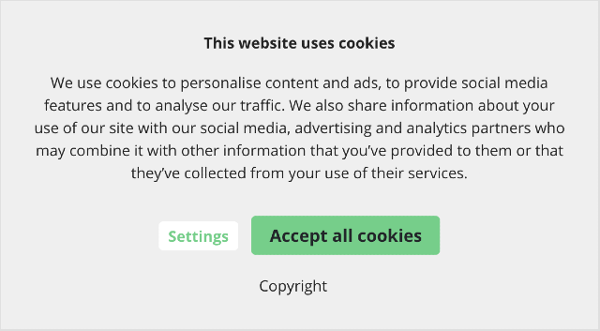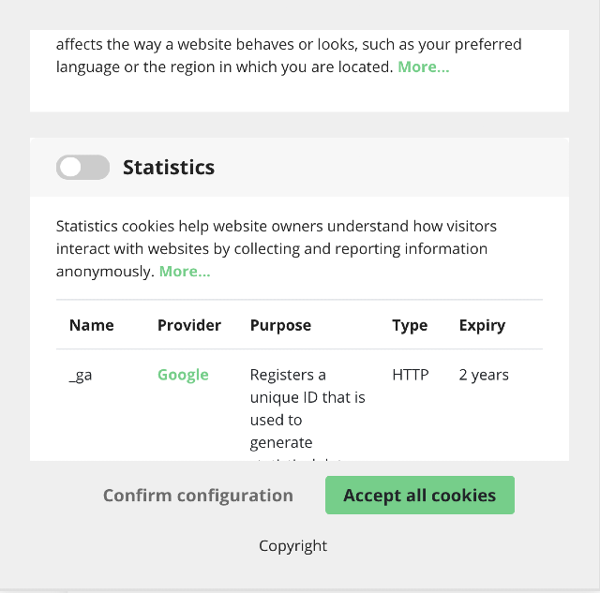
Guideline
GDPR and digital magazines – this is how it works
The GDPR has not simplified the handling of information and data, which causes some real headache for many people. But is this really necessary? It’s worth keeping this topic in mind right from the beginning - the implementation is not that difficult, but - and this is very important - it is urgently required.
What is the GDPR actually?
Somehow pretty much everyone has heard of the GDPR, at some point. But nobody really wants to go into detail (except maybe your data protection officer, who will probably be happy to share an extended lunch with you while explaining every single GDPR detail).
The General Data Protection Regulation, short: GDPR, provides a common regulation for the protection of personal data all over Europe. In case of neglect or violation of the GDPR sanctioning is to be expected. That’s why everything in your new digital magazine linked with this topic should be considered and waterproof.
GDPR provides a common regulation for the protection of personal data all over Europe.
Everything you need to know. And how to get there in no time.
Data protection has become a very comprehensive topic and it's always recommended to communicate with your company's data protection officer. Often there is a superordinate concept or even internal company regulations, which might help you to implement your digitization strategy in accordance with the data protection regulations.
Most things can be dealt with by yourself if you only keep a few major points in mind.
Cookies are required for the evaluation.
Standard cookie banner in Webmag. The cookies used are automatically listed and can be selected and deselected by the user.
Special features: forms and newsletter registrations
An important part of your digital magazine are options through which your readers are able to interact and get in touch with you: For example entry forms or input masks for newsletter registration.
Since by using the above mentioned, personal data is being transferred it’s important that everything is set up correctly regarding the GDPR regulations. It doesn’t matter whether it’s a contact form or a newsletter registration - the user must be informed of what will happen to his data before submitting. And he must be able to revoke his agreement.
When collecting e-mail addresses, a specific agreement process applies: the double opt-in procedure. It includes at least one confirmation e-mail. Even better would be sending out another welcoming email including the option to unsubscribe, in case someone accidentally subscribed to your newsletter.
In order to meet all these requirements and to be able to process data sensibly, it makes sense to involve specialized providers. Just to mention a few: There is Hubspot for creating forms, Mailchimp for creating newsletter lists or Paperform for multiple choice queries.
By using external providers all data is collected in compliance with data protection regulations and you don’t need to pay any extra attention to further GDPR topics when creating your online magazine. All you have to do: include the cookies set by the external provider in your privacy policy.
Conclusion
It’s a matter of opinion whether cookie banners and data protection regulations are reader-friendly or provider-friendly. However, if you want to push things forward in terms of digitisation in your company, it is not worth thinking too much about detailed characteristics of the GDPR. Make sure that you have an overview of what is necessary for publication and agree with your provider and your data protection officer that you are proceeding in compliance with the GDPR. In most cases it’s not rocket science to create a data protection-compliant digital magazine. And eventually everyone benefits from this - you, as well as your readers.
Webmag has been specialized in making the GDPR-compliant setup of your online magazine as easy as possible. The integrated cookie banner can be activated with a simple click. Now add some links to your imprint and your data protection declaration and you’re good to go. All cookies your magazine sets, for example, because you have integrated YouTube videos, analytics or forms, will be automatically displayed in the cookie banner according to the GDPR. Or you can use your internal company solutions, e.g. Cookiebot. Also this way you can keep it simple and still be safe.
Do you want to convince yourself? Our team is happy to be there for you and answer any open question you might have.

Container for the dynamic page
(Will be hidden in the published article)




